Resource Management Software | Employee Performance Tracking Software
Blog
Resource Utilization Beyond Numbers: How Smart Allocation Fosters Innovation

In today’s competitive business landscape, resource utilization is no longer just about optimizing efficiency or reducing costs. It’s about unlocking the hidden potential within your team to drive innovation and achieve breakthrough results. Smart resource allocation empowers organizations to harness their talent, tools, and time effectively, fostering a culture of creativity and strategic thinking that goes beyond the conventional metrics of productivity.
This blog explores the transformative role of smart resource allocation in fostering innovation, offering insights and strategies to help businesses stay ahead in a fast-evolving marketplace.
What is Resource Utilization, and Why Does It Matter?
Resource utilization refers to the strategic use of resources—such as personnel, technology, and time—to maximize output and achieve organizational goals. Traditionally measured in terms of utilization rates and efficiency metrics, resource utilization is a vital indicator of operational performance.
However, in the age of innovation, effective resource utilization transcends numerical benchmarks. It becomes a catalyst for creativity and forward-thinking by aligning resources with business objectives and fostering an environment where innovation thrives.
Key Benefits of Effective Resource Utilization:
- Optimized productivity.
- Reduced operational waste.
- Enhanced team morale.
- Greater capacity for innovation.
The Shift from Metrics to Mindset
Focusing solely on resource utilization metrics can often lead to burnout, inefficiency, and missed opportunities for innovation. A smarter approach shifts the focus from numbers to mindset, encouraging businesses to view their resources as enablers of creativity and strategic growth.
Why Numbers Alone Fall Short
- High utilization rates often overlook the quality of work produced.
- Overburdened resources can stifle creativity and strategic thinking.
- Quantitative measures fail to capture the intangible benefits of resource innovation, such as improved team dynamics and market differentiation.
The Smart Allocation Mindset
Smart resource allocation prioritizes the alignment of resources with innovation goals. It focuses on creating a balanced workload, fostering collaboration, and allowing room for experimentation.
How Smart Allocation Drives Innovation
Smart allocation is about more than just matching resources to tasks; it’s about unlocking potential and creating opportunities for innovation. Here’s how:
- Creating Space for Creativity : Innovation often requires time to experiment, fail, and refine ideas. Overloading teams with tasks leaves little room for creative thinking. By allocating resources strategically, businesses can ensure their teams have the bandwidth to innovate.
Example: A software development firm dedicates a portion of its team’s time to exploring new technologies, resulting in the creation of a groundbreaking product feature.
- Leveraging Cross-Functional Collaboration: Innovation thrives at the intersection of diverse perspectives. Allocating resources from different departments to collaborative projects encourages knowledge sharing and creative problem-solving.
Example: A marketing and product development team working together can produce campaigns that resonate deeply with the target audience while aligning with product capabilities.
- Optimizing Skills Utilization: Understanding the unique skills and strengths of team members allows managers to assign tasks that not only match their expertise but also challenge them to grow. This fosters a sense of purpose and motivation that drives innovative thinking.
Example: Assigning a designer with a flair for storytelling to lead a branding initiative can result in fresh, impactful ideas.
- Encouraging Experimentation: Smart allocation provides the resources needed for experimentation, such as funding, time, and tools. Teams are more likely to take risks and explore new ideas when they know their efforts are supported.
Example: A manufacturing company invests in prototyping tools for its R&D team, leading to faster iteration and more innovative product designs.
Strategies for Smarter Resource Allocation
To foster innovation through resource utilization, businesses must adopt strategies that balance efficiency with creativity. Here are actionable steps to get started:
- Embrace Data-Driven Insights: Leverage resource management tools to gain visibility into resource allocation and identify opportunities for improvement. Analyze data to ensure resources are neither overburdened nor underutilized.
- Prioritize High-Value Projects: Allocate resources to projects that align with organizational goals and have the potential to drive significant impact. Avoid spreading resources too thin across low-priority tasks.
- Foster a Culture of Collaboration: Encourage cross-functional teams to share resources and collaborate on innovative projects. Use centralized dashboards and communication tools to streamline teamwork.
- Allow for Flexibility: Build flexibility into your resource management processes, allowing teams to adapt to changing priorities and explore new ideas as opportunities arise.
- Invest in Skill Development: Empower your workforce with training and development opportunities. Skilled employees bring fresh perspectives and ideas that can transform how resources are utilized.
The Role of Technology in Smart Resource Allocation
Technology is a critical enabler of smart resource allocation. Modern resource management tools provide real-time insights, automation, and analytics that make it easier to allocate resources effectively.
Features to Look For in Resource Management Tools:
- Real-time resource tracking.
- Skills and workload analysis.
- Automated scheduling and task allocation.
- Integration with project management software.
- Predictive analytics for demand forecasting.
Challenges in Resource Utilization and How to Overcome Them
While smart resource allocation offers significant benefits, it comes with its own set of challenges:
- Lack of Visibility: Without clear visibility into resource availability and workloads, managers may struggle to allocate effectively.
Solution: Implement resource management software to centralize data and provide real-time insights.
- Resistance to Change: Teams may resist new allocation strategies if they disrupt existing workflows.
Solution: Communicate the benefits of smart allocation and involve employees in the planning process.
- Balancing Efficiency and Innovation: Finding the right balance between efficiency and creativity can be challenging.
Solution: Designate dedicated time and resources for innovation-focused activities without compromising day-to-day operations.
Case Study: Innovation Through Smart Allocation
A mid-sized tech company struggling with resource bottlenecks implemented a resource management tool to optimize allocation. By aligning tasks with employee strengths and prioritizing high-impact projects, the company reduced workload imbalances and freed up time for its teams to innovate. Within a year, the company launched a new product line that accounted for 30% of its revenue growth.
Conclusion: Building a Future of Innovation
Smart resource allocation is more than just a productivity tool—it’s a strategic advantage that enables businesses to foster innovation and stay competitive. By shifting the focus from numbers to mindset and leveraging technology to streamline processes, organizations can unlock the full potential of their resources.
Call to Action:
Ready to take your resource management to the next level? Discover how smart allocation can drive innovation in your business. Contact us today to learn more.

